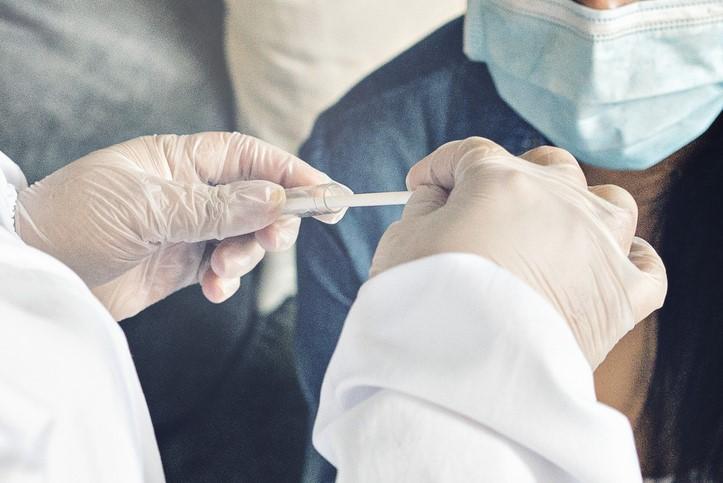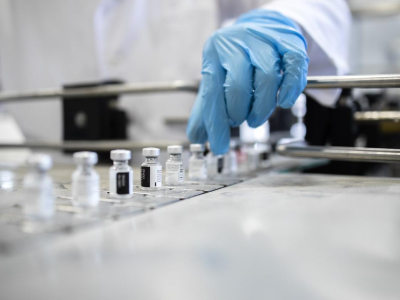Today, PLOS Medicine published two large COVID-19 studies, one a meta-analysis of 79 international studies showing that most infected patients eventually have symptoms, and the other a study of 5.8 million US Department of Veterans Affairs patients revealing that blacks and Hispanics were more likely to be infected—but not to die within 30 days—than whites.
Small proportion of asymptomatic patients
The first study, by researchers at the University of Bern in Switzerland, consisted of a systematic review and meta-analysis of COVID-19 literature from March to June and an analysis of 79 studies involving 6,616 people in 19 countries or territories, of whom 1,287 were classified as asymptomatic.
The investigators found that only 20% of coronavirus patients reported no symptoms at follow-up, and these patients appeared less likely than those with symptoms to infect others (relative risk, 0.35). Modeling studies that were included suggested that people with presymptomatic infections were more infectious than those with no symptoms.
The reasons some COVID-19 patients have severe illness, including viral pneumonia and respiratory distress, and some die—while others have only mild or asymptomatic illnesses—are unknown.
The authors said that accurate estimates of asymptomatic and presymptomatic infections of SARS-CoV-2, the virus that causes COVID-19, are important for understanding virus transmission and developing effective public health strategies. They called for prospective longitudinal studies that document symptoms, as well as improved accuracy of antibody tests to reduce the proportion of false-negative results.
The finding that about 80% of COVID-19 patients eventually have symptoms suggests that presymptomatic transmission likely contributes substantially to outbreaks of the disease, the researchers said.
"The findings of this systematic review of publications early in the pandemic suggests that most SARS-CoV-2 infections are not asymptomatic throughout the course of infection," the authors said in a PLOS news release. "The contribution of presymptomatic and asymptomatic infections to overall SARS-CoV-2 transmission means that combination prevention measures, with enhanced hand and respiratory hygiene, testing and tracing, and isolation strategies and social distancing, will continue to be needed."
Racial differences in testing, positivity
The second study, conducted using Veterans Affairs electronic medical records from Feb 8 to Jul 22, showed that white patients made up 65% of the 254,595 patients tested for COVID-19, compared with black (26%) and Hispanic patients (9%). Of all patients tested, 73% were tested once, 16% were tested twice, 6% were tested three times, and 5% received at least four tests.
After including only one test per patient, testing rates were higher in black patients (6%) and Hispanic patients (5.3%) than in whites (3.9%). Rates of testing differed by age, sex, rural vs urban residence, region, and outbreak pattern.
Of the 16,317 patients who tested positive for the coronavirus, 44% were white, 40% were black, and 16% were Hispanic. Fully adjusted models showed that black and Hispanic patients, respectively, were 1.9 and 1.8 times more likely than whites to test positive. Hispanic patients were more likely than whites to test positive for COVID-19, regardless of region, date, and outbreak pattern.
Of the 8,625 patients who tested positive for COVID-19 by Jun 21, 457 white patients (49%), 392 black patients (42%), and 82 Hispanic patients (9%) died. However, after adjusting for age in black and Hispanic patients, 30-day death rates did not differ by race nor ethnicity.
Racial health disparities were wider in the Midwest (odds ratio [OR], 2.7) than in the West (OR, 1.2), perhaps due to less racial community integration in the Midwest, the authors surmised. The inequities were also strongest in facilities that experienced early or resurgent outbreaks and decreased slightly during the study, which the investigators said could have been caused by increased media attention to COVID-19 racial disparities.
About 66% of all patients lived in urban areas, but 76% of those tested and 87% of those who tested positive lived in urban areas. Of all the variables studied, age, rural versus urban residence, and site of care explained more of the racial health disparities than underlying conditions, substance abuse, or medications. The study population consisted of mostly men (91%), 74% whites, 19% blacks, and 7% Hispanics.
"In this nationwide study, we found that Black and Hispanic individuals are experiencing an excess burden of SARS-CoV-2 infection not entirely explained by underlying medical conditions or where they live or receive care," the authors wrote. "There is an urgent need to proactively tailor strategies to contain and prevent further outbreaks in racial and ethnic minority communities."
Lead author Christopher Rentsch, PhD, MPH, of the London School of Hygiene & Tropical Medicine, said in a PLOS news release that understanding the drivers of racial health disparities is critical to designing effective interventions to address them.
"Going forward, we are exploring whether racial and ethnic disparities exist at other key stages in the clinical course of COVID-19, from hospitalization to intubation," Rentsch said. "We appeal to other researchers who have the necessary testing data to investigate disparities in testing and testing positive. This will provide essential information to design effective interventions."





















